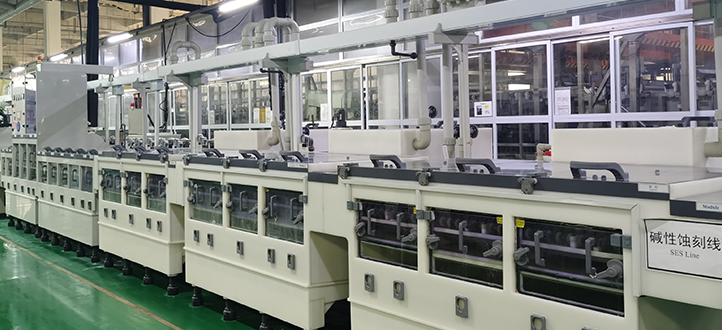Different Methods and Considerations of PCB Etching

PCB etching is an important process in PCB assembly and involves various methods and techniques, each with its unique characteristics and suitable applications. It is important to consider key factors while using these methods to ensure the accuracy and success of the etching process. Here are some common PCB etching methods and related considerations:
1.Chemical Etching
Chemical etching is one of the most commonly used PCB etching methods. It utilizes chemical solutions, such as etchants or etching agents, to remove excess copper and define circuit patterns. When performing chemical etching, parameters like etchant concentration, temperature, and etching time need to be carefully controlled. Additionally, proper immersion and rinsing processes must be employed to ensure the desired copper removal.
2.Mechanical Etching
Mechanical etching is another prevalent etching method that involves the removal of excess copper through mechanical force. This method typically utilizes etching machines or etching tools for precise cutting and copper removal on the circuit board. Mechanical etching offers higher accuracy and control, making it particularly suitable for complex and high-density PCBs. 3.Laser Etching
Laser etching is a precise etching method that uses a high-energy laser beam to remove excess copper. Laser etching provides exceptional precision and speed, making it suitable for manufacturing micro-sized PCBs and intricate circuitry. However, using laser etching requires specialized equipment and techniques, and attention must be paid to laser beam power and focus to avoid unnecessary damage to the PCB.
When performing PCB etching, it is also important to consider the following:
1.Safety Measures: Etchants and related chemicals used in the process may pose health hazards, so proper safety measures such as wearing protective gloves, goggles, and clothing should be taken, and operations should be conducted in well-ventilated environments.
2.Control Parameters: Various parameters during the etching process, such as temperature, concentration, etching time, and mechanical force, need to be precisely controlled according to the specific etching method. This helps ensure consistent and accurate etching results.
3.Quality Inspection: After etching is complete, quality inspection is necessary to ensure that the etched results meet the design requirements. This involves using a microscope to examine the clarity of circuit patterns, verifying line widths against specifications, and checking for any defects or inconsistencies.
By understanding the different PCB etching methods and considerations, manufacturers and engineers can choose the most suitable etching method for their project requirements and ensure the accuracy and consistency of the etching process. In the next section, we will explore the factors influencing the effect of PCB etching.

